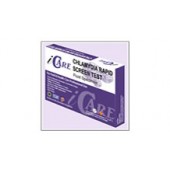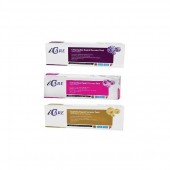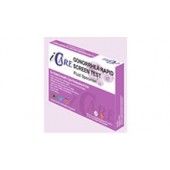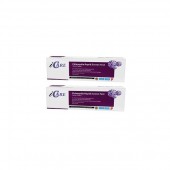Gonorrhea cases continue to increase in Minnehaha County in spite of ongoing efforts to curb the spread of sexually transmitted diseases and infections, local and state health officials said Monday.
Last year, county medical professionals reported 257 cases of gonorrhea, according to the South Dakota Department of Health. Through the first three months of this year, they reported 66 cases of the venereal disease, putting the yearly projection for the county's gonorrhea cases at 264.
"The rate of gonorrhea cases here in Minnehaha County has tripled since 2011, and from what we are already seeing this year, STDs are indeed a health concern that deserves our attention," said Dr. Jennifer Tinguely, chief medical officer at Falls Community Health.
Working with state health officials and the Centers for Disease Control and Prevention, the clinic monitors STD cases and offers health screenings — on a sliding fee scale based on income — to help prevent the diseases from spreading, Tinguely said. But so far, data indicate those efforts are falling on deaf ears for at least one portion of the population.
Lon Kightlinger, state epidemiologist with the state Department of Health, said gonorrhea and STD rates include a nearly equal number of male and females. Where a disparity is prevalent, he said, is between age groups.
"Sexually transmitted diseases affect people of all ages, but we see our biggest case numbers in those ages 15 to 24, both in South Dakota and in the nation," Kightlinger said.
Based on a recent CDC report, that age group, though making up only about one-quarter of the United States' sexually active population, is responsible for about half of the 20 million new STD cases each year.
Fifty-four percent of Sioux Falls STD cases are individuals between 20 and 29, according to information provided by the city Health Department.
"There are a number of factors that put younger people at risk, including having multiple partners, access to screenings, concerns about confidentiality and even social media and the Internet, which have made it easier for people to find anonymous sex partners," Tinguely said.
To make inroads with the people most affected by the growing prevalence of STDs, programs are being developed in conjunction with education officials and other community partners to better reach young people, said Vanessa Sweeney, clinic services manager at Falls Community Health.
"With the younger demographic, traditional outreach methods might not always work, so that's something that we're actually researching right now ... to make sure that we are pushing out and disseminating this information in a way that will actually reach their ears or their eyes," she said.
In the meantime, two grant awards recently secured by Falls Community Health will enable the clinic to continue ongoing prevention efforts for other STDs.
The clinic recently received $370,500 in federal funding for the Ryan White Part C Program, an early intervention program aimed at bettering the quality and availability of health care for HIV/AIDS patients. A grant of $80,000 from the CDC, awarded through the state Health Department, will cover personnel and service costs for HIV testing, HIV prevention education using CDC-approved practices, pharmaceutical consultations for patients and connections to medical care and partner services.
BY THE NUMBERS
20 million - new STD cases in U.S. annually
54 - percent of Sioux Falls STD cases involving people 20 to 29 years old
255 - cases of chlamydia in Minnehaha County from January to March
66 - cases of gonorrhea in Minnehaha County from January to March
257 - cases of gonorrhea in Minnehaha County in 2014
Health officials warn of increase in STD cases
Thursday, May 21, 2015 12:47:37 PM America/New_York
Posted in Blog
By










